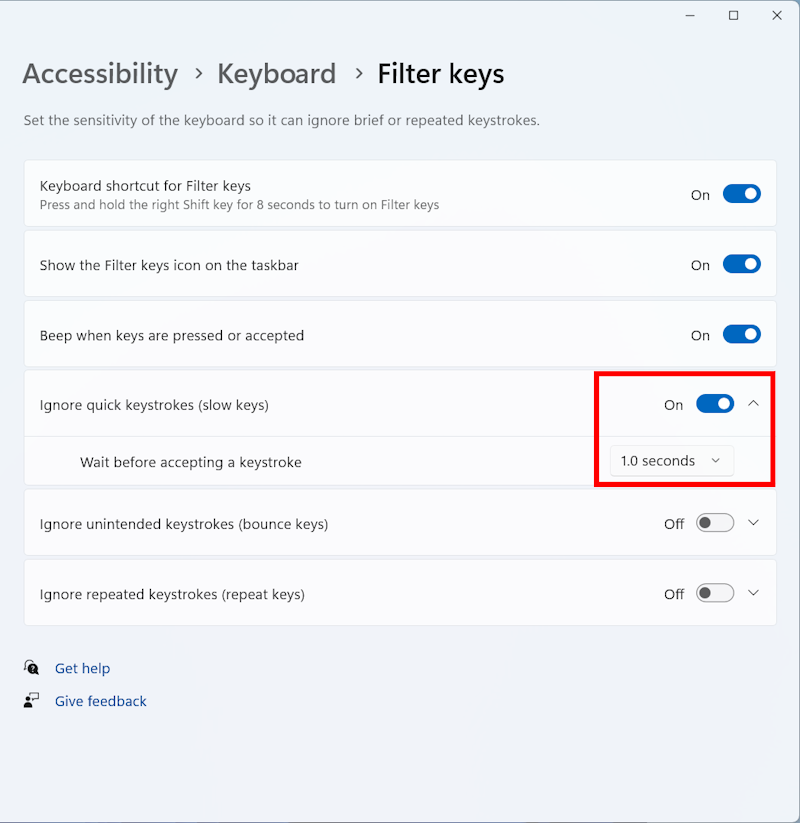Short guide
- Open the Accessibility settings by pressing the Windows key + U on the keyboard. Select Keyboard.
- Click on the toggle switch for Filter Keys to turn it on. Click on the arrow button for further options.
- Try enabling Slow Keys, Bounce Keys and Repeat Keys. Turning these on or off may improve your typing experience.
Before and after

This section will show you how to enable Filter Keys in Window 11. This is a step-by-step guide with pictures of the screens to help you.
Open the Accessibility settings
1. Open the Accessibility settings by pressing the Windows key + U on the keyboard. Scroll down to the Interaction section and click on Keyboard in the right-hand column.

Enable Filter Keys
2. Click on the toggle switch for Filter keys to turn it on, then click on the > arrow to the right to see further options.

Change the Filter Keys options
3. Once Filter Keys is enabled you will see other options appear. Turning these on or off might improve your typing experience. You can allow the Shift key to work as a shortcut key to start Filter Keys, or add a Filter Keys icon to the taskbar for easy access. You can also set your laptop or PC to beep every time a key is pressed.

Using Slow keys
4. The Ignore quick keystrokes or slow keys option tells your computer to wait until a key is pressed for a specific time before it accepts a key stroke. You can enable it by clicking on the toggle switch. Click the down arrow to see a drop-down menu where you can set your own time limit.

Using Bounce Keys
5. Enable Ignore unintended keystrokes or bounce keys to make your PC wait for a specified time before accepting a repeated keystroke. Again, tapping the down arrow reveals a drop-down menu where you can change the delay time setting

Using Repeat Keys
6. Enable Ignore repeated keystrokes or repeat keys to set how long your computer waits before accepting a repeated keystroke. You can set different times for the first repeated keystroke and repeated keystrokes after that using the two drop-down menus below. Click the down arrow next to the toggle switch to reveal them.

Note: If these options don't work it could be because your computer settings are managed by someone else (an IT department or administrator for example). If this is the case, you will need to contact them to access these settings or for further help.